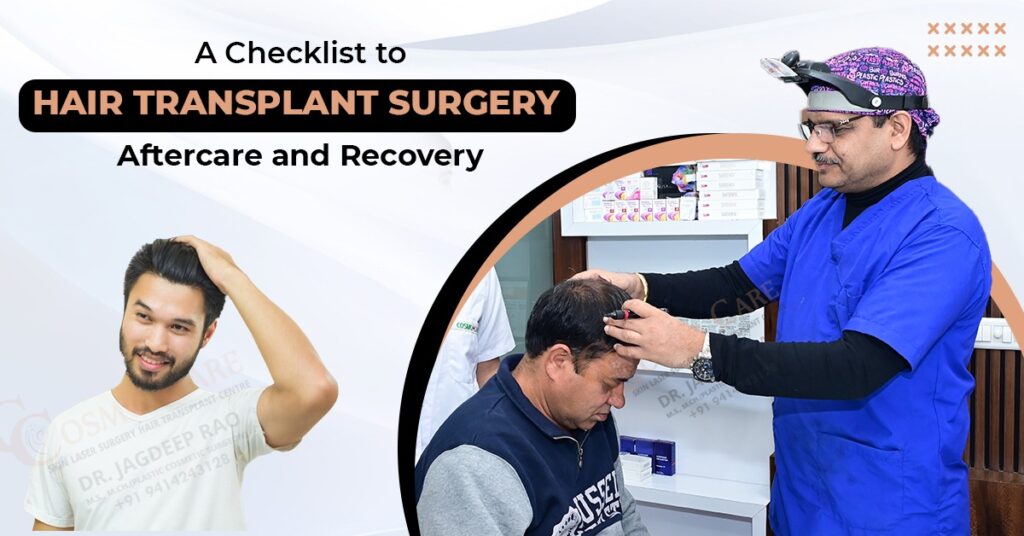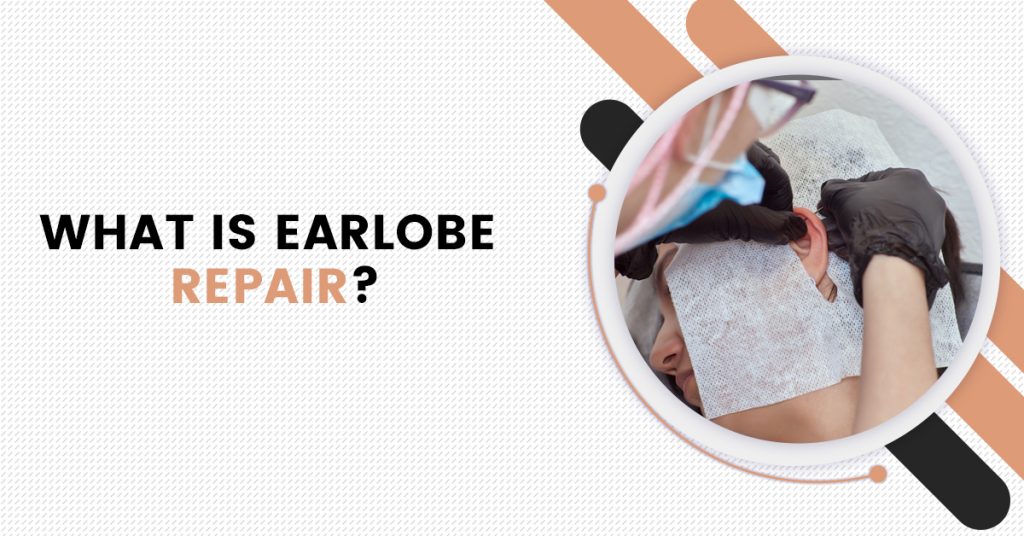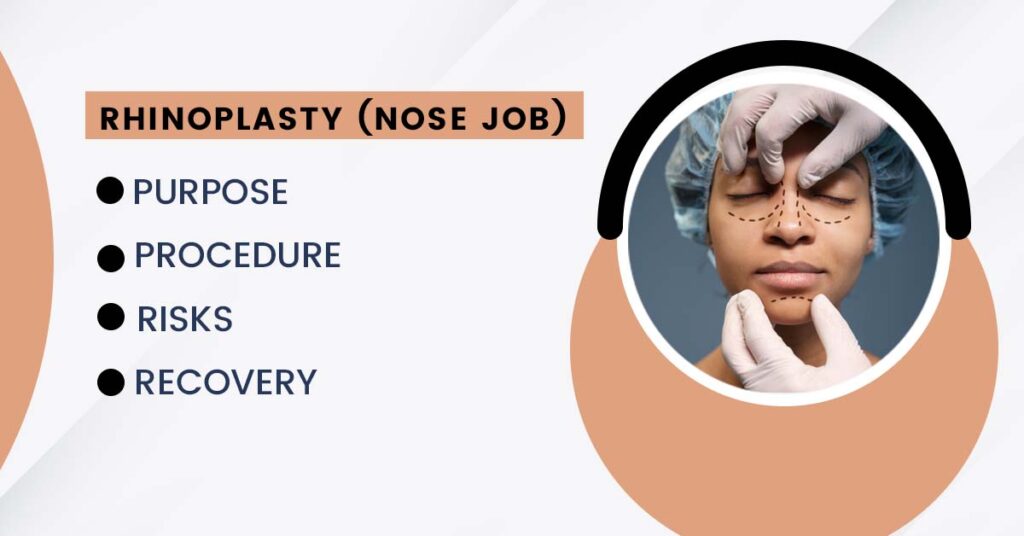What does the hair transplant recovery timeline look like?
The recovery timeline for a hair transplant procedure can vary depending on several factors including the technique used (such as FUE or FUT), the individual’s healing process, and the extent of the transplant. However, I’ll provide a general overview of what you can typically expect:
● Right After the Procedure (Days 0 through 1):
Right after the procedure, your scalp may feel sore, and you may experience some swelling and redness. It usually passes after a few days and is quite normal.
To protect the grafts, your scalp will be covered in bandages or a surgical dressing, which you should follow your surgeon’s instructions and keep in place.
● Days 2 – 7:
Swelling and redness typically peak around the second or third-day post-surgery and gradually start to diminish.
You may experience some discomfort or itching in the donor and recipient areas as they begin to heal.
Your surgeon may recommend pain medication and/or anti-inflammatory drugs to manage any discomfort and swelling.
● Days 7 – 14:
By the end of the first week, the majority of the swelling and redness should have subsided. You’ll likely be able to resume light activities and return to work if your job doesn’t involve strenuous physical activity.
Following your surgeon’s post-operative care instructions carefully during this period is essential to ensure optimal healing and graft survival.
● Weeks 2 – 4:
Most transplanted hair will fall out within the first two to three weeks. This is a normal part of the process, known as “shock loss,” and shouldn’t be a cause for concern.
The transplanted follicles will enter a dormant phase before new hair growth begins, which typically occurs around the third or fourth-month post-surgery.
Your scalp may still be sensitive during this period, and you should avoid exposing it to direct sunlight and strenuous activities that could strain the healing grafts.
● Months 1 – 6:
During this phase, you’ll start to see new hair growth emerging from the transplanted follicles. The hair may initially appear thin and sparse, but it will gradually thicken and become more dense over time.
It’s essential to be patient during this period, as significant visible improvement may not be noticeable until around six to nine months post-surgery.
● Months 6 – 12:
By the sixth month, you should start to see significant improvement in the density and appearance of the transplanted hair. The hair will continue to grow and mature, and you may notice further thickening and increased coverage.
At this stage, you can expect the final results of your hair transplant to become more apparent.
● Beyond 1 Year:
The transplanted hair will continue to grow and blend in naturally with the rest of your hair. With proper care and maintenance, the results of your hair transplant should be long-lasting, providing you with a fuller, more youthful-looking head of hair.
It’s important to note that individual experiences may vary, and it’s crucial to follow your surgeon’s recommendations for post-operative care and maintenance to ensure the best possible outcome from your hair transplant procedure. Additionally, scheduling regular follow-up appointments with your surgeon will allow them to monitor your progress and address any concerns throughout the recovery process.
You can read also:- What Is a Mini Tummy Tuck And Who Can Opt For It?
Hair Transplant Surgery
Here’s a concise overview of the hair transplant surgery procedure:
- Preparation: The surgeon will mark the donor and recipient areas on your scalp. The donor area is usually the back or sides of the head, where hair follicles are genetically resistant to balding.
- Anaesthesia: Local anaesthesia is administered to numb both the donor and recipient areas. Sometimes, mild sedation may also be provided to help you relax during the procedure.
- Donor Hair Extraction: Depending on the chosen technique (FUE or FUT), individual hair follicles or a strip of tissue containing hair follicles is harvested from the donor area.
- Graft Preparation: The harvested follicles are meticulously dissected and prepared under a microscope by surgical technicians.
- Recipient Site Preparation: Hair growth patterns and predetermined hairlines are taken into account when making incisions in the recipient area.
- Graft Placement: The prepared grafts are carefully inserted into the recipient sites, ensuring proper angulation, density, and orientation for a natural-looking result.
- Post-operative Care: After the procedure, the scalp may be bandaged, and you’ll be given instructions on how to care for your scalp, including medications to manage pain, and swelling, and prevent infection.
- Follow-up: You’ll typically have follow-up appointments to monitor healing progress, address any concerns, and receive guidance on post-operative care and grooming.
The entire procedure can take several hours to complete, depending on the extent of the transplant and the number of grafts being transplanted. Overall, the goal is to redistribute healthy hair follicles from the donor area to the balding or thinning areas of the scalp to achieve a more youthful and natural-looking appearance.
Hair Transplant Post Care
Post-Operative Care:
Regardless of the technique used, patients will receive post-operative instructions to promote proper healing and optimize the success of the transplant. This may include:
- Taking prescribed medications to prevent infection and reduce swelling.
- Skip heavy lifting and physically demanding tasks for a predetermined amount of time.
- Following a specific hair care routine to protect the newly transplanted hair.
- Attending follow-up appointments with the surgeon to monitor progress and address any concerns.
Hair Care Routine
After a hair transplant, maintaining a proper hair care routine is crucial for optimal healing and growth of the transplanted hair. Here’s a summary:
- Shampooing: Begin gentle shampooing of the recipient area after 48 hours, as advised by your surgeon. Use a mild, pH-balanced shampoo and gently lather the scalp with your fingertips, avoiding rubbing or scratching.
- Rinsing: Rinse the scalp thoroughly with lukewarm water after shampooing to remove any residue or buildup. You should avoid using hot water on your scalp, as it can irritate it.
- Drying: Gently pat the scalp dry with a soft towel or allow it to air dry naturally. Avoid rubbing or vigorously drying the area to prevent dislodging of the grafts.
- Avoiding Irritants: Refrain from using hair products containing harsh chemicals, dyes, or alcohol, as they can irritate the scalp and hinder healing. Consult your surgeon for recommendations on suitable hair care products.
- Protecting from Sun Exposure: Protect the scalp from direct sunlight by wearing a hat or applying a broad-spectrum sunscreen with SPF 30 or higher, especially during the first few months post-transplant when the scalp is most sensitive.
- Avoiding Trauma: Be gentle when combing or brushing your hair to avoid pulling on the grafts. Use a wide-toothed comb or a soft-bristled brush and avoid styling techniques that put stress on the scalp.
- Medication Compliance: Take any prescribed medications, such as antibiotics or anti-inflammatory drugs, as directed by your surgeon to prevent infection and reduce swelling.
- Follow-up Appointments: Attend scheduled follow-up appointments with your surgeon to monitor the progress of healing and address any concerns or questions you may have about your hair care routine.
Conclusion:
Dr Jagdeep Rao, with his expertise and dedication, stands at the forefront of hair transplant procedures in Jaipur. His commitment to delivering exceptional results and patient satisfaction sets him apart in the field of hair restoration. Through meticulous attention to detail and personalized care, Dr Jagdeep Rao ensures that each patient receives the highest standard of treatment tailored to their unique needs.
At the esteemed hospital where Dr Jagdeep Rao practices, patients can expect state-of-the-art facilities and a compassionate team dedicated to their well-being. With a focus on innovation and excellence, this hospital offers the latest advancements in hair transplant technology, ensuring optimal outcomes for every patient.
If you are thinking of getting the best hair transplant in Jaipur then here, is Dr. Jagdeep Rao and his hospital for your hair transplant needs in Jaipur ensures not only superior medical expertise but also a supportive and nurturing environment throughout your journey to hair restoration. Trust in Dr Jagdeep Rao and his team for the best hair transplant experience in Jaipur, where your confidence and satisfaction are their utmost priorities.







